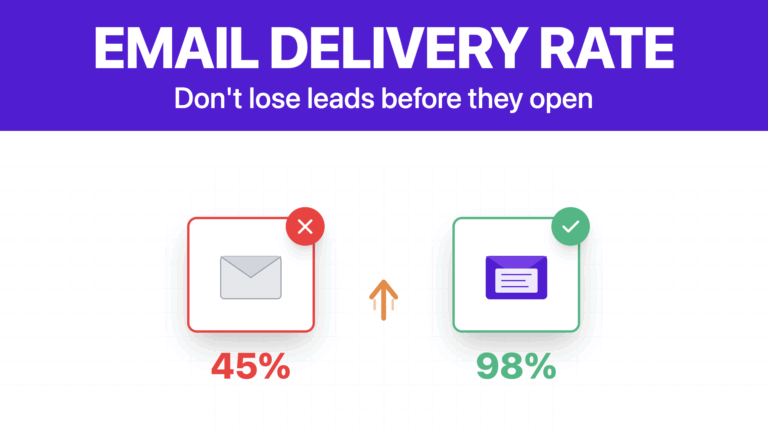How To Improve Email Deliverability
Contents
If you’re looking to improve email deliverability, you’re already ahead of 90% of senders.
Because truth is most people focus on writing the perfect subject line or designing flashy templates… while their emails quietly land in the spam or promotions tab.
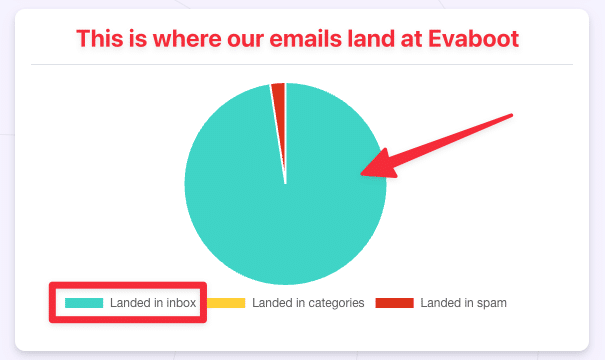
And if you’ve ever watched your open rates tank, you know: once your sender reputation drops, recovery is slow and painful.
This guide will walk you through email deliverability best practices that actually move the needle—whether you’re doing cold outreach or sending warm campaigns at scale.
Here’s what we’ll cover:
- 6 Proven Strategies To Improve Email Deliverability
- 4 Email Deliverability Testing Tools
- Key Factors That Affect Email Deliverability
Let’s dive in.
6 Proven Strategies To Improve Email Deliverability
Improving email deliverability isn’t about finding one magic fix—it’s about building a reputation brick by brick.
Inbox providers like Gmail and Outlook evaluate dozens of signals before deciding whether your email should land.
Below, we’ll break down the most effective strategies to make sure your campaigns actually reach your audience:
- Authenticate Your Domain (SPF, DKIM, DMARC, BIMI)
- Build And Warm Up Your Sender Reputation
- Clean Your Email List Regularly
- Optimize Email Content To Avoid Spam Filters
- Monitor Blacklists And Engagement Metrics
- Stay Compliant With Email Laws (GDPR, CAN-SPAM)
1. Authenticate Your Domain (SPF, DKIM, DMARC, BIMI)
If there’s one technical setup you can’t skip, it’s email authentication.
These four protocols—SPF, DKIM, DMARC, and BIMI—signal to mailbox providers that you’re a verified sender, not a spoofed address or spammer.
1. SPF (Sender Policy Framework): Tells inbox providers which IPs are allowed to send on behalf of your domain.

2. DKIM (DomainKeys Identified Mail): Adds a cryptographic signature to your emails so providers can confirm the content wasn’t tampered with.

3. DMARC: Builds on SPF and DKIM to define how providers should handle failed authentication. You can reject, quarantine, or monitor suspicious messages.
4. BIMI: Optional but powerful—it shows your brand logo next to your emails in supported inboxes, improving trust and open rates.

Setting up these records correctly in your DNS is a must if you want to stay out of the spam folder.
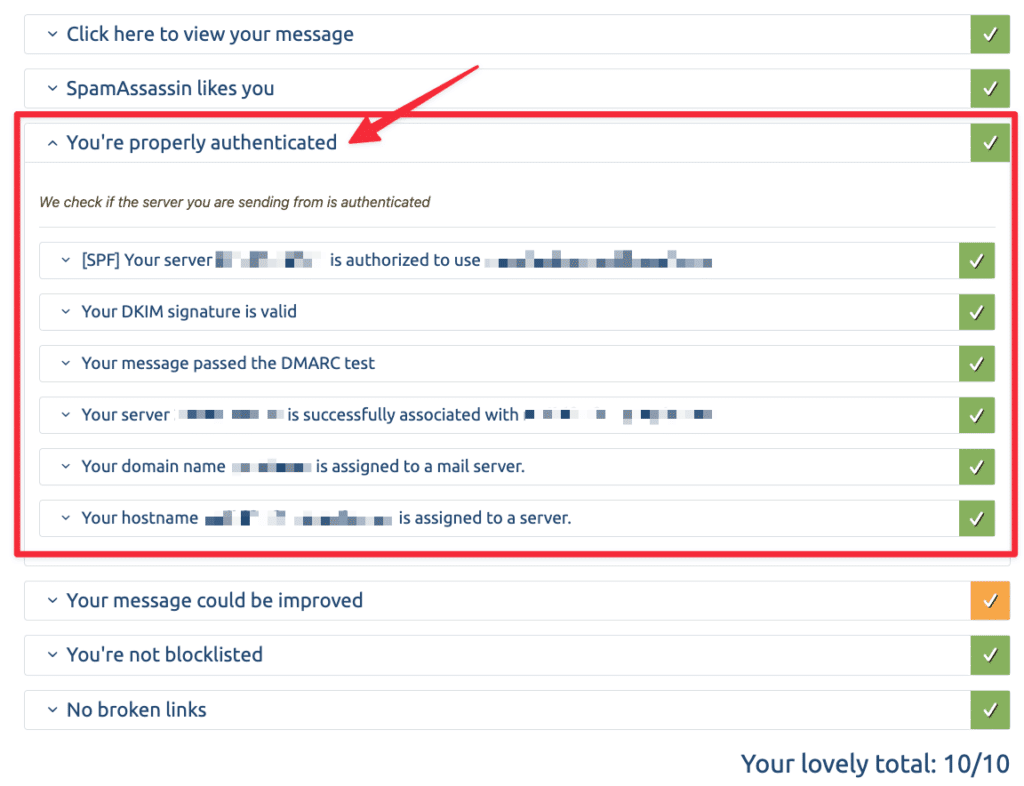
And if you’re not sure whether your domain is authenticated, tools like Mail-Tester can help you verify everything’s configured properly.
2. Build And Warm Up Your Sender Reputation
Even with perfect technical setup, your emails might still get flagged—especially if you’re sending from a new domain or a cold IP.
That’s because sender reputation is like a credit score for your domain and IP. The higher it is, the more likely your emails are to land in the inbox.

If you’re just starting out:
- Send small batches first. Never blast thousands of emails on day one.
- Warm up your domain/IP slowly over 2–4 weeks using tools like Mailreach, Instantly or Lemwarm.
- Engage your warm contacts—those most likely to open and click—to train inbox providers that your emails are wanted.
And even after warming up, keep your engagement high. High open and reply rates = stronger domain reputation = better inbox placement.
3. Clean Your Email List Regularly
Your email list might be big—but is it clean?
If you’re still emailing inactive, fake or bounced addresses, your sender reputation is taking a hit. And inbox providers are paying attention.
Here’s how to keep your list healthy:
- Verify your list regularly using email verifications tools like Evaboot (for LinkedIn scraping), ZeroBounce, or Bouncer. This helps remove invalid or temporary email addresses.
- Delete ghost subscribers. If someone hasn’t opened in the last 6–12 months, it’s time to let them go.
- Use double opt-in to make sure people actually want your emails.
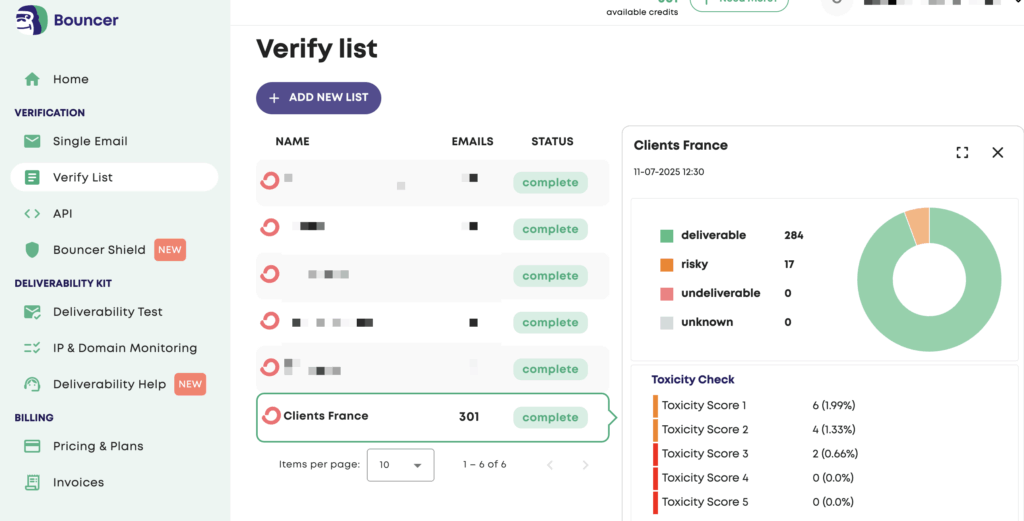
Cleaning your list might feel painful at first—but a smaller, more engaged list is the fastest way to improve email deliverability and increase open rates.
4. Optimize Email Content To Avoid Spam Filters
Even if your domain is squeaky clean, your content can still send red flags.
Spam filters scan every part of your email—from the subject line and images to your unsubscribe link—to decide if it’s safe or suspicious.
Avoid these content killers:
- Clickbait subject lines (“ACT NOW!!! FREE MONEY!!!”) = automatic spam.
- Too many images, too little text = bad text-to-image ratio.
- Broken HTML code
- Link shorteners (like bit.ly) raise red flags.

Do this instead:
- Stick to a clean layout, with clear CTAs and alt text for images.
- Always include a visible unsubscribe link—not just for compliance, but for trust.
- Personalize your subject lines and/or email content (first name, recent actions).
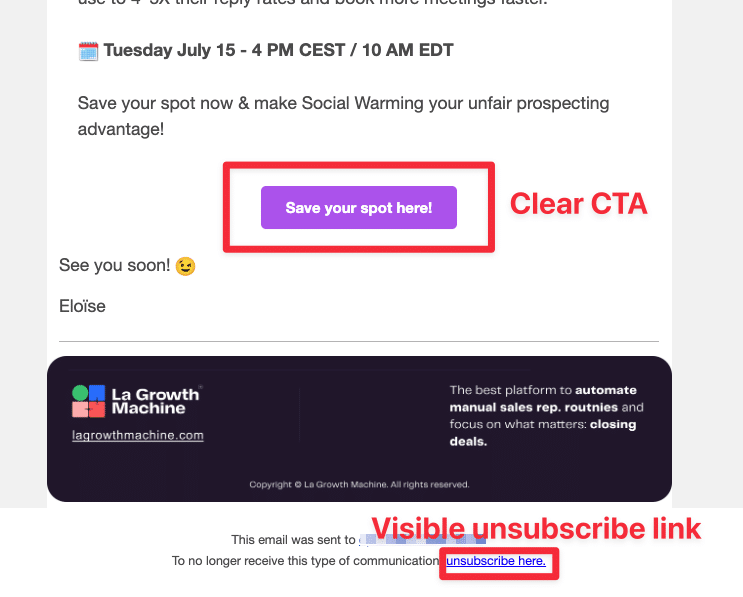
Want to know if your content might be flagged? Run it through Mail-Tester before sending.
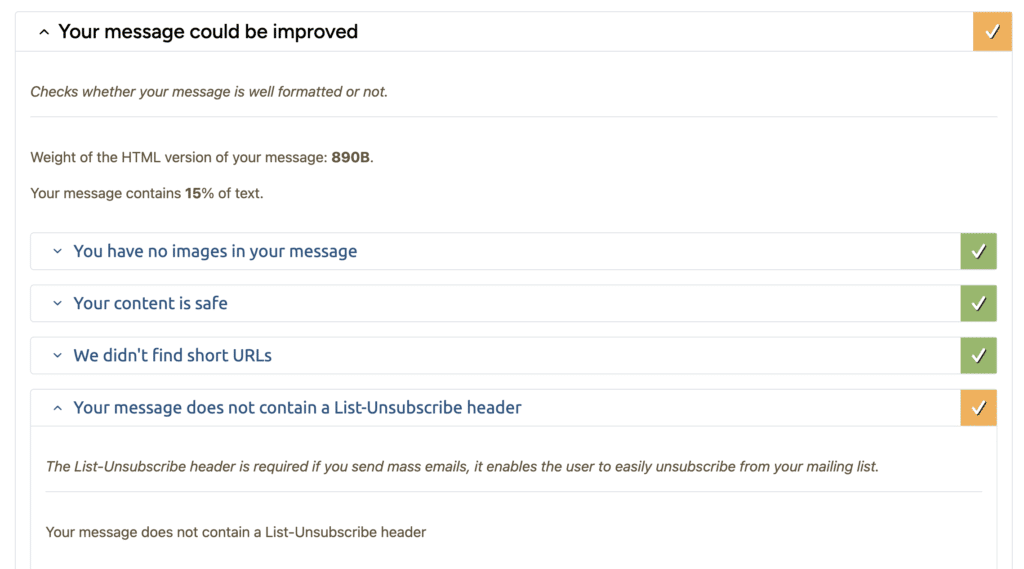
Content isn’t just written for readers—it also needs to satisfy spam filters.
5. Monitor Blacklists And Engagement Metrics
Most senders don’t realize they’re blacklisted until their open rates drop like a rock.
Inbox providers track your behavior, and if they notice too many spam complaints, hard bounces, or shady links, they’ll silently divert your emails to spam.

Here’s how to stay ahead:
- Run regular blacklist checks on tools like MxToolbox or Talos Intelligence.
- Monitor your open rate, click rate, bounce rate, and spam complaint rate. A spike in bounces or complaints is a red flag.
- If your open rate drops significantly on a specific provider (e.g. Gmail or Outlook), your emails might be getting filtered at the domain level.
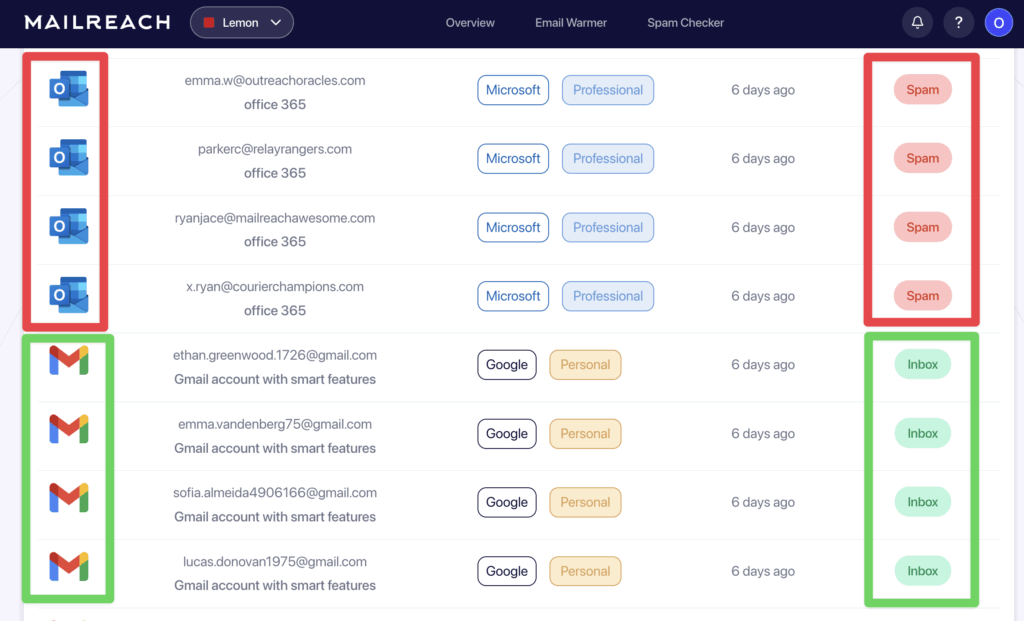
Use Google Postmaster Tools to keep an eye on domain reputation and performance with Gmail. For other providers, rely on your ESP’s reports or a deliverability tool like MailReach.
6. Stay Compliant With Email Laws (GDPR, CAN-SPAM)
Last but not least: deliverability dies fast if you break the rules.
If you’re emailing EU residents, GDPR applies. In the U.S., CAN-SPAM rules. Failing to comply won’t just hurt your inbox rate—it could cost you fines and legal headaches.
Checklist to stay safe:
- Always get explicit consent before sending marketing emails.
- Add your physical company address in the footer.
- Don’t use deceptive subject lines or sender names.
- Include a clear unsubscribe link in every email.

And never buy an email list. Not only is it a deliverability killer, it’s illegal in many countries.
Follow these legal basics, and you’ll not only improve your email deliverability—you’ll also build a list that actually wants to hear from you.
4 Email Deliverability Testing Tools
Before launching any email campaign, it’s critical to know how it will perform—not just in theory, but in real inboxes. That’s where deliverability testing tools come in.
These platforms help you identify spam risks, authentication issues, and inbox placement problems before your emails go live.
Here are the top tools to test and increase email deliverability:
- Mail-Tester
- Google Postmaster Tools
- GlockApps
- MailReach
1. Mail-Tester
Mail-Tester is a super simple tool. You send an email to a custom test address, and it gives you a score out of 10.
It checks:
- SPF, DKIM, and DMARC setup
- Spammy keywords and phrases
- Text-to-image ratio
- Broken HTML or blacklisted links
- Your IP/domain’s blacklist status
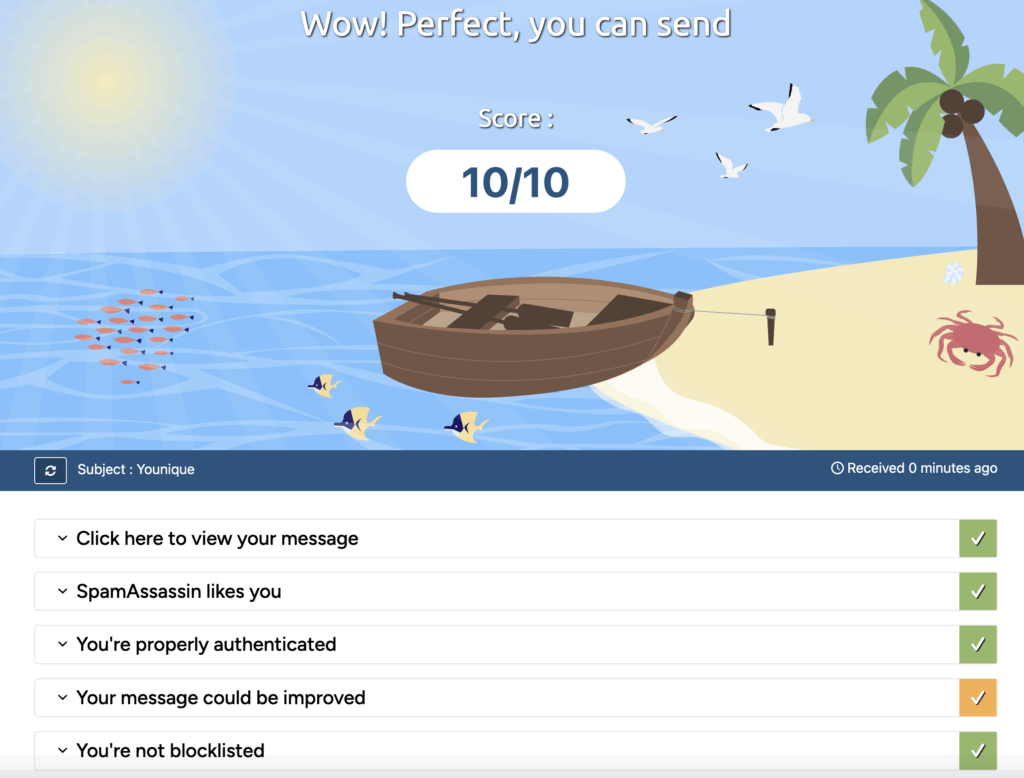
It’s a must-use tool before launching any cold outreach or bulk campaign.
2. Google Postmaster Tools
Google Postmaster Tools is a free dashboard for anyone sending large volumes of email to Gmail users.
It shows:
- Domain reputation scores
- Authentication pass/fail rates (SPF, DKIM, DMARC)
- Spam complaint levels
- Delivery errors
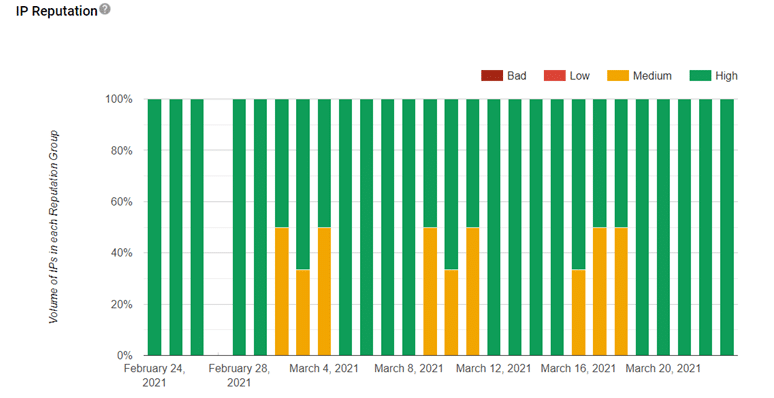
This is less about pre-send testing and more about ongoing post-send monitoring, but it helps you validate whether Gmail is flagging your domain after each campaign.
3. GlockApps
If you want to know where your email lands—Primary inbox, Promotions tab, or Spam—GlockApps is a great tool.
By sending to a network of test inboxes, you get:
- Inbox vs. Promotions vs. Spam breakdown
- Spam filter insights (e.g., Gmail, Barracuda, SpamAssassin)
- Authentication diagnostics

Use it to detect if Gmail suddenly starts sending your emails to Promotions or if Outlook blocks you completely.
4. Mailreach
Mailreach combine testing with inbox warming.
They let you:
- Test where your emails land across providers
- Simulate human-like interactions (opens, replies, star ratings) during warm-up
- Monitor progress of new domains or IPs as you build trust
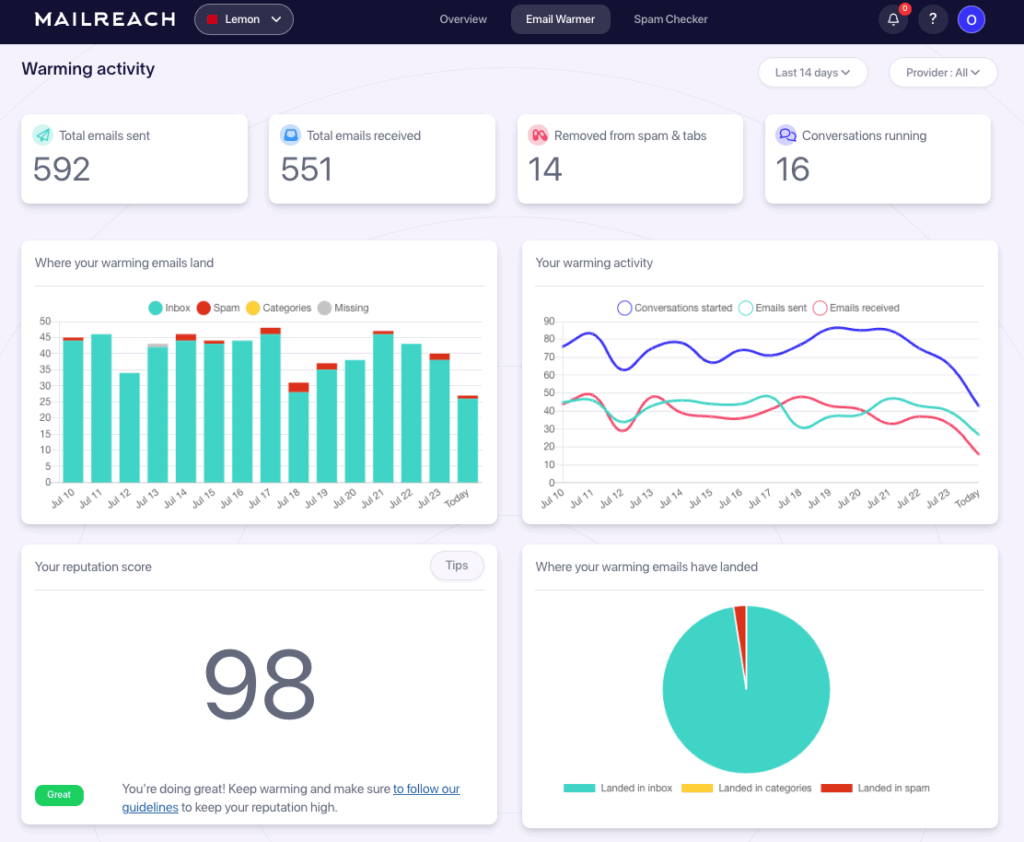
Ideal if you’re using a cold domain or just launched a new sender identity.
Key Factors That Affect Email Deliverability
By now, you’ve seen the tools and strategies you can use to improve deliverability. But what exactly is happening under the hood?
Inbox providers don’t just look at your last campaign—they evaluate long-term behavior and signals tied to your domain, content, and recipients’ actions.
Here are the core elements inbox algorithms use to judge your emails:
- Sending Behavior And Historical Patterns
- User Engagement Signals
- Sender Reputation History
- Email List Quality
1. Sending Behavior And Historical Patterns
Email providers track your sending frequency, volume, and consistency over time.
Spikes in volume, inconsistent sending patterns, or switching domains frequently can signal suspicious behavior—even if your content is clean.

These patterns are especially scrutinized when:
- You’re using a new domain
- You suddenly increase daily volume
- You change your “from” name or reply address too often
Keeping a predictable sending pattern is key to building long-term trust.
2. User Engagement Signals
Email deliverability is no longer just about what you send—it’s about how recipients respond.
Mailbox providers track signals like:
- Opens and clicks
- Replies and forwards
- Emails marked as spams
- Emails deleted without opening
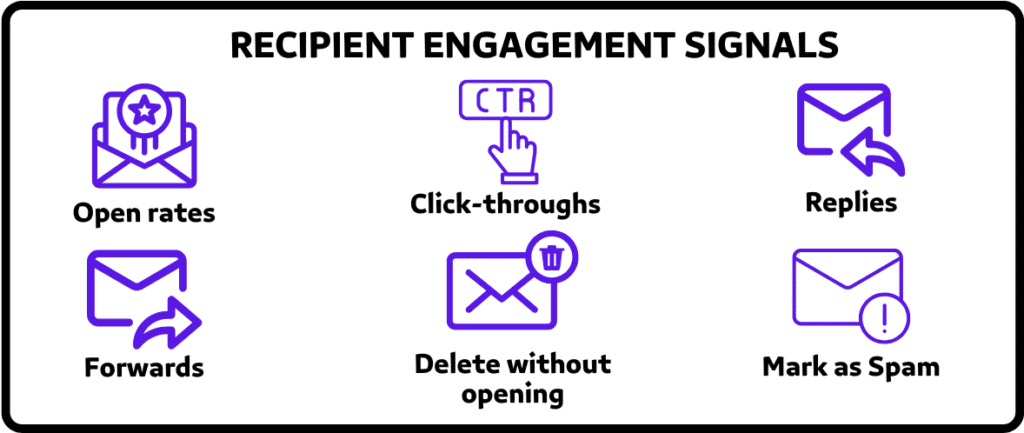
These metrics tell algorithms whether your emails are welcomed—or ignored. If engagement drops consistently, your entire domain can get deprioritized or filtered out automatically.
3. Sender Reputation History
Even if your setup is technically correct, your past behavior leaves a footprint.
Every domain and IP builds a history—and mailbox providers remember everything.
They track:
- Bounce rates — Too many bounces = bad list = untrustworthy sender.
- Spam complaints — Just 0.1% can tank your reputation.
- Sending behavior — Sudden volume spikes or erratic schedules look suspicious.

If you’re using a shared IP, other senders on the same infrastructure can also impact your deliverability.
That’s why older domains, warm IPs, and clean reputation histories carry significant weight.
4. Email List Quality
Poor data = poor deliverability. High bounce rates and inactive contacts send negative signals to inbox providers.
The fix? It starts with accurate email data.
That’s where tools like Evaboot comes in.
Instead of relying on questionable scraping tools or outdated databases, Evaboot helps you extract clean and verified B2B emails directly from LinkedIn Sales Navigator.
So, if you want to create lead lists from your LinkedIn network and enrich your lists with real-time email data, this is the right tool.
It provides you with ready-for-outreach Excel files in just one click.
Its main features include:
- Find professional emails
- Verify emails
- Export leads from LinkedIn Sales Navigator
- Export company profiles
- Export LinkedIn profile URLs
- Clean the data (emojis, capital letters, typos…)
- Detect false positives in your search results

The final results are based on the search filters you used on LinkedIn Sales Navigator.
So whenever it sees a lead that doesn’t match your search requirements, the “Match Filter” will indicate “NO”.
It’s very easy to use:
1. Click the extension button on the top right of your Sales Navigator page.

2. It’ll redirect to the Evaboot dashboard, where you can launch the export.

Once the export is done, you can download the email lists with all the other lead information needed to personalize your outreach messages.
Another great thing about Evaboot is that it does not give you false emails.

If the address is risky or old, it will be excluded from the list.
This means you can import the exported file to a CRM or outreach software and launch your campaign without concern.
Evaboot’s pricing is credit-based.
The most basic plan starts at $9 for 100 credits.

With Evaboot, you don’t have to worry about the quality and legality of the data.
You’ll have GDPR-compliant and verified emails ready to exploit in your next outreach campaign.
Conclusion
Inbox placement isn’t luck, it’s a system. And once you understand how email deliverability really works, you can start controlling it.
By following these email deliverability best practices—from authentication and clean data to engagement and testing—you’ll know exactly how to keep your sender reputation strong.
Whether you’re running cold outreach or large-scale campaigns, the key to increase email deliverability is consistency, quality, and smart strategy.
No hacks. Just proven steps that help your emails land where they belong: the inbox.

FAQs
How Do I Know If My Emails Are Going To Spam?
Use inbox placement tools like GlockApps or Mail-Tester to send test emails and see where they land.
A sudden drop in open rates is also a strong indicator that your emails are being filtered.
What Is A Good Email Deliverability Rate?
Deliverability isn’t typically measured as a single number, but ideally, you want:
1. Bounce rate < 2%
2. Spam complaint rate < 0.1%
3. Inbox placement rate > 85%
If you’re hitting those, your domain is in good shape.
Can Changing My Domain Fix Deliverability Issues?
Temporarily, yes—but if you don’t fix the underlying problems (bad list hygiene, spammy content, lack of authentication), your new domain will end up in the same place.
Use new domains as part of a reset + warm-up plan, not a Band-Aid.
What Causes Sudden Drops In Deliverability?
Often it’s a combination of factors: spam complaints, a surge in sending volume, getting flagged by a blacklist, or issues with your email content or links.
Use Postmaster Tools or your ESP’s reports to pinpoint the issue.
Why Is My Open Rate So Low Even Though My Emails Are Delivered?
Delivery doesn’t equal inbox placement. Your emails may be landing in Spam or Promotions.
Also, recipients may ignore your emails due to poor subject lines, irrelevant content, or sending fatigue


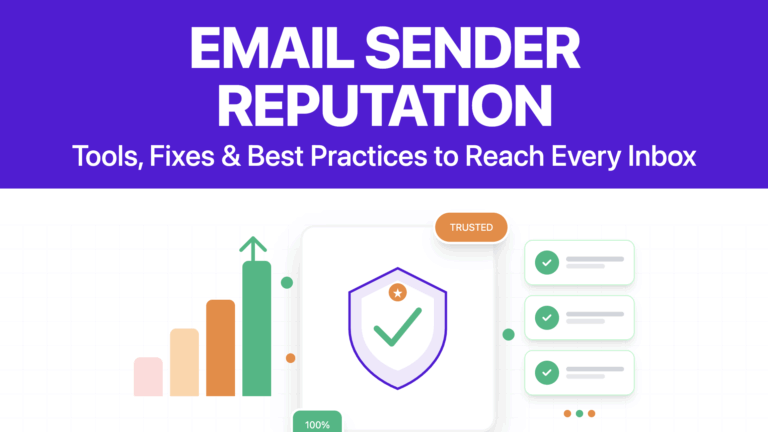

![How To Verify Email Addresses? 5 Tools To Use In [year] 55 verfy email](https://evaboot.com/wp-content/uploads/2024/08/Verfy-Email-768x432.webp)

![Best Email Verification Tools Compared In [year] 57 best email verification tools](https://evaboot.com/wp-content/uploads/2025/04/best-email-verification-tools-1-768x431.png)
